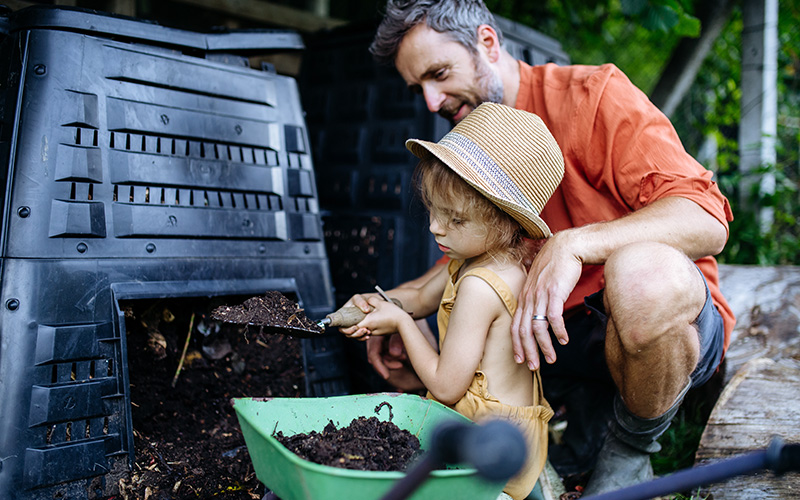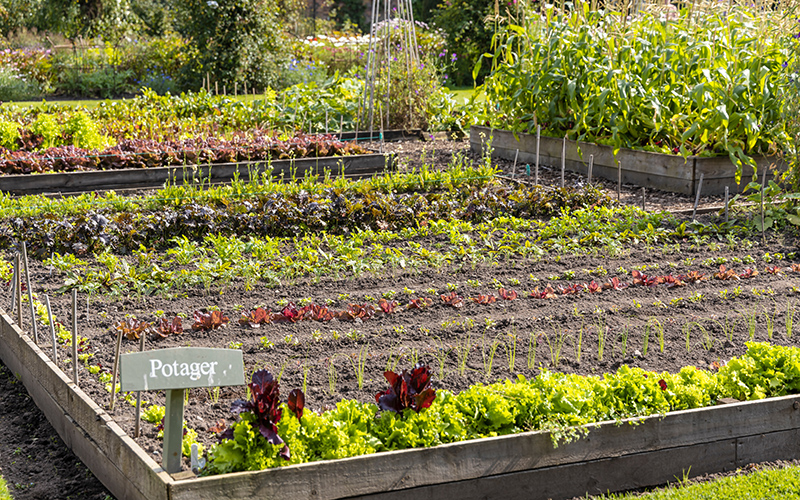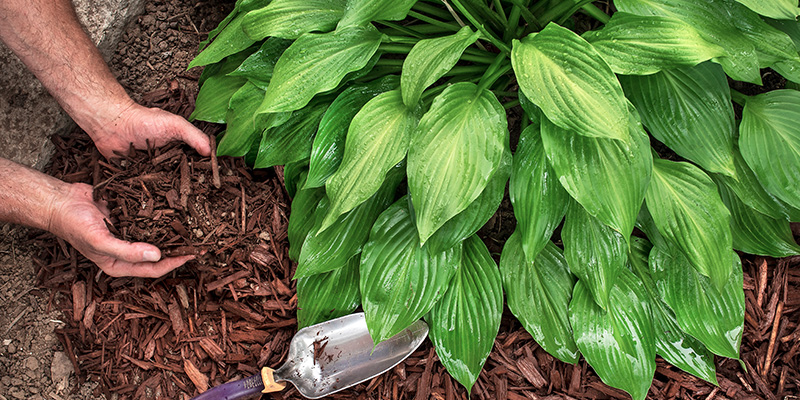Compost is an invaluable resource for those who grow food, whether in a home garden or on a farm. Whatever your reasons for wanting to try it, you don’t have to look for a commercial composting program in your area; you can always try your hand at backyard composting.
What Is Composting?
Composting is the process of recycling organic matter and turning it into fertilizer that can be used to enrich soil and support plant growth. The decomposed material, sometimes referred to as “black gold’, often ends up looking like fertile garden soil.
The Six-Step Backyard Composting Guide for Beginners
Food waste makes up more than 20% of all the waste that goes into landfills. The EPA estimates that the commercial, residential, and institutional sectors generated about 63 million tons of wasted food just in 2018.
Fortunately, you can easily take food waste your household generates and compost it instead of throwing it out with the rest of your trash. Here’s what you need to do.
Step 1: Choose a Spot
The logical first step in this backyard composting DIY guide is to choose where the pile will be.
Preferably, the location you pick should be close enough to your kitchen but not too near any outdoor living areas. You should also ensure it isn’t too near a neighbor’s property.
Backyard composting bins aren’t necessary since compostable materials will break down even if left in an open pile. However, some people use a container to keep animals away, speed up the process, and maintain the cleanliness of their yard or backyard.
If you want to use a container for one or all of those reasons, you can build one or buy one from local or online retailers.
Step 2: Collect the Materials
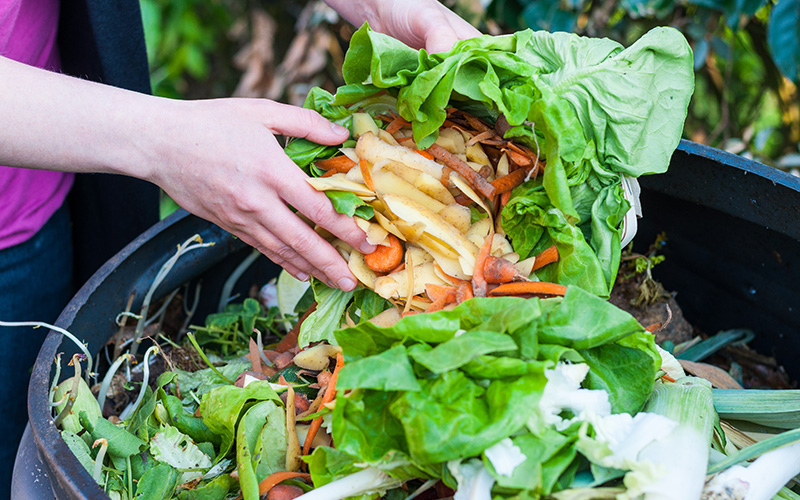
The food scraps and other materials will naturally pile up while you’re preparing meals, but taking them out to the backyard compost pile can be inconvenient if you do it multiple times a day.
Instead, gather them in a small bucket, can, or kitchen pail. Whatever container you choose should have a lid to keep any smells in. Then bring the accumulated scraps to the compost pile twice a week.
If you’re unsure how to do backyard composting and don’t know which materials to add to the pile, a rule of thumb is to mix carbon (browns) and nitrogen (greens) sources.
Vegetable and fruit scraps, weeds, coffee grounds, fresh grass clippings, egg shells, and tea bags are examples of greens. Meanwhile, dead leaves, hay or straw, dried grass clippings, soiled cardboard boxes, and newspapers are examples of browns.
If you’re backyard composting without a bin, don’t add materials that take a long time to decompose or are bound to attract animals. While any organic material decomposes over time, adding fatty foods, meat or bones, treated wood, or human and pet waste is not a good idea.
Step 3: Build the Compost Pile
Even if you don’t know how to layer a compost bin or pile, it’s easy enough to learn the basic principle behind it. All you need to do is alternate green and brown materials in that order. This is to help create the optimal conditions to begin the decomposing process.
It will help to have a leaf pile near the compost pile, so you can add dry leaves from there whenever you add food scraps and other green materials.
Place the food scraps near the pile’s center to mask any smells and discourage insects and rodents from going near the compost pile. Then cover them entirely with brown materials.
Step 4: Manage Your Compost Pile
Sometimes, problems arise while composting, not counting slower breakdown during the colder months. If you have a good understanding of what makes up a composting pile, you’ll be able to manage yours and take steps to ensure the process doesn’t halt.
When the compost pile isn’t warm enough, add more green material or a larger volume of brown and green material. If a foul odor comes from the pile, you’ll need to add more brown material. Do the same if you notice flies and other pests.
On the other hand, if the compost pile is too dry, you’ll want to add more green material and perhaps even spray the pile to add a little more moisture. If it’s too wet, though, decrease the green material you add or throw in more brown material.
Step 5: Be Patient
Backyard composting will take time, with insects, fungi, worms, and bacteria working on breaking down the material in the pile and turning it into usable compost. So be patient and let the process happen.
In the meantime, just repeat steps 2 to 5, using the older material to bury the newer one once the pile is big enough and the former has started to turn dark brown.
Step 6: Harvest the Compost
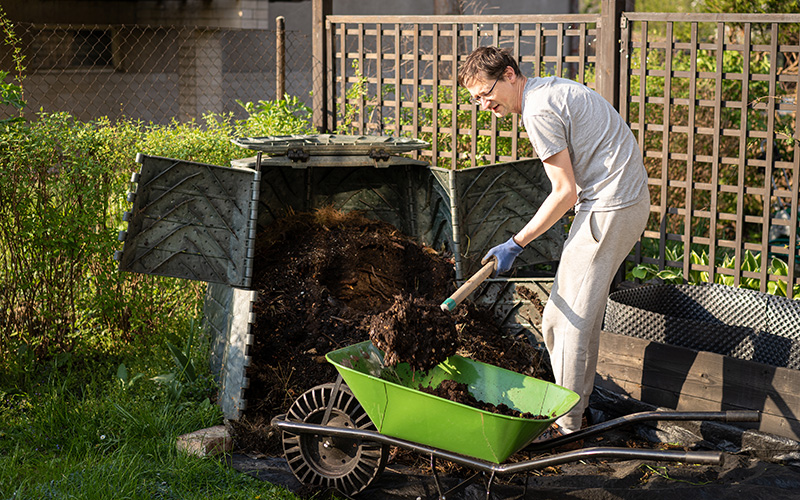
You’ll know your compost is ready to harvest and use when it has an earthy smell and all the materials used have turned dark brown and broken down into a mass with a dirt-like consistency. If there are any large chunks, just put them back in the pile to break down further.
Backyard Composting Methods
There are three broad categories that describe the different composting methods. There is no one best backyard composting method; instead, you’ll want to choose the one that fits your needs or will best work for your property.
-
Cold/Slow Composting
This is for those with more brown material in their compost and aren’t bothered by the slower decomposition rate. This method is more accessible to implement and manage. You’ll have to wait longer, though, and there’s a chance that pests will dig up buried waste.
-
Hot/Fast Composting
This is the most intensive method, but if you have the space on your property for at least 1 cubic yard of material, there’s no reason not to go ahead with this type of composting.
This method is a good choice for proactively controlling weed seeds and plant pathogens while getting fresh compost faster. However, you need the right blend of green and brown material plus moisture; the food scraps shouldn’t be over 3 inches big.
You need to turn the pile frequently to provide aeration, though, so if you don’t have the time to manage your compost pile very often, then this may not be the method for you.
-
Vermicomposting
Worms are great helpers when it comes to decomposing, and that’s why this method is also known as worm-based composting.
If your compost material is mostly kitchen and table scraps, or you don’t have much extra space on your property, this may be the best option.
You’ll need to make a worm bin, which means getting your hands on red wigglers or African nightcrawlers from a local worm farm or bait stores.
3 Benefits of Backyard Composting
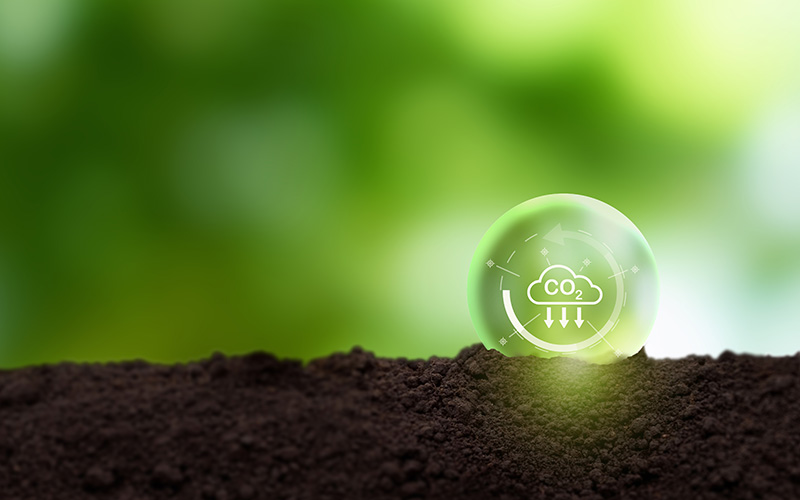
When you look into backyard composting ideas and implement them, there are several benefits you can look forward to, even if you don’t experience all of them directly.
Reduces Costs
You reduce your household’s waste production when you take food waste and compost it instead of throwing it out. The more households that try composting, the less solid waste will be sent to landfills, where it costs about $55 per ton to process. Therefore, the less waste is sent to municipal landfills, the less local governments will spend on waste management.
Reduces Greenhouse Gas Emissions
Compostable waste that goes to landfills usually undergo anaerobic decomposition, producing biogas that’s about half carbon dioxide and half methane. Both of these are potent greenhouse gases, so if you reduce organic waste, you help reduce these emissions.
Soil Health Improvement And Water Conservation
Compost contains the three primary nutrients garden crops need – nitrogen, phosphorus, and potassium. There will also be traces of calcium, iron, and zinc. Therefore, compost naturally enriches your garden or backyard soil, so your plants can grow better.
Healthier soil is also better at retaining water, helping conserve this precious resource.
A Greener Type of Waste Reduction
You can compost in various ways. For example, you can add it to the soil around the plants and do repotting. You can use it as mulch on your lawn, around trees and shrubs, and even around landscaped areas.
Compost is valuable, especially if you want to maintain the greenery on your property. Therefore, it makes sense to make it yourself instead of buying it from a gardening supply store or something similar. And since backyard composting is simple enough, there’s no reason not to try it.
You Can Also Read These:
- Practice Companion Planting For A Healthier And Thriving Garden
- Backyard Vegetable Garden For Beginners
- Organic Mulch vs Inorganic Mulch: What’s Best For Your Garden?

